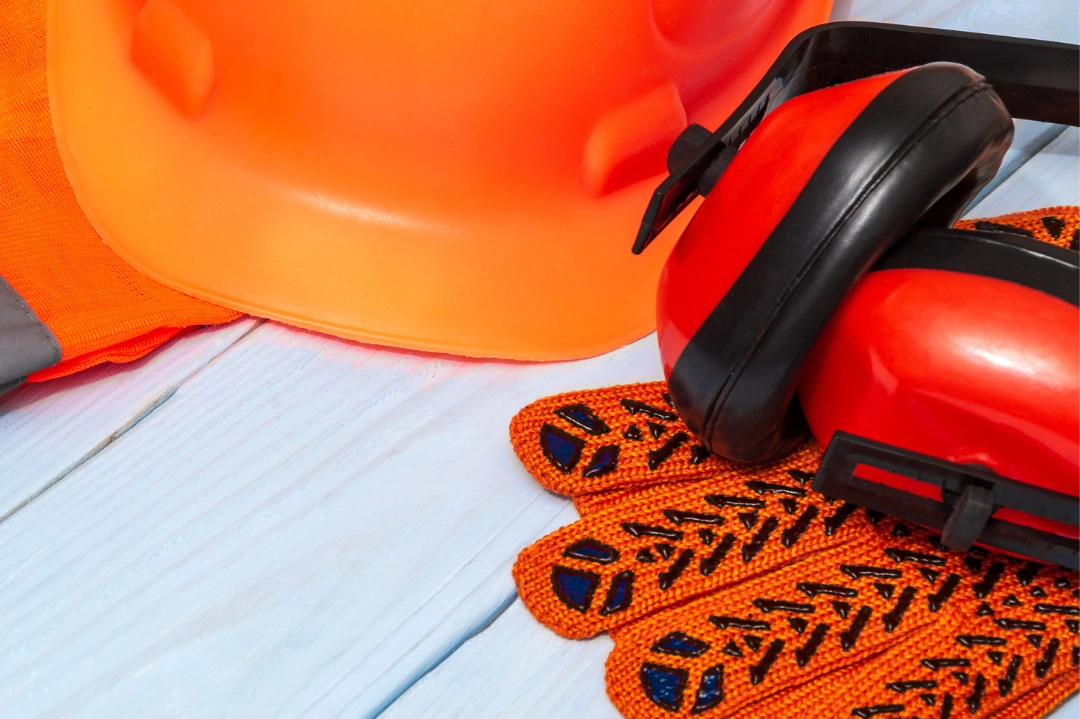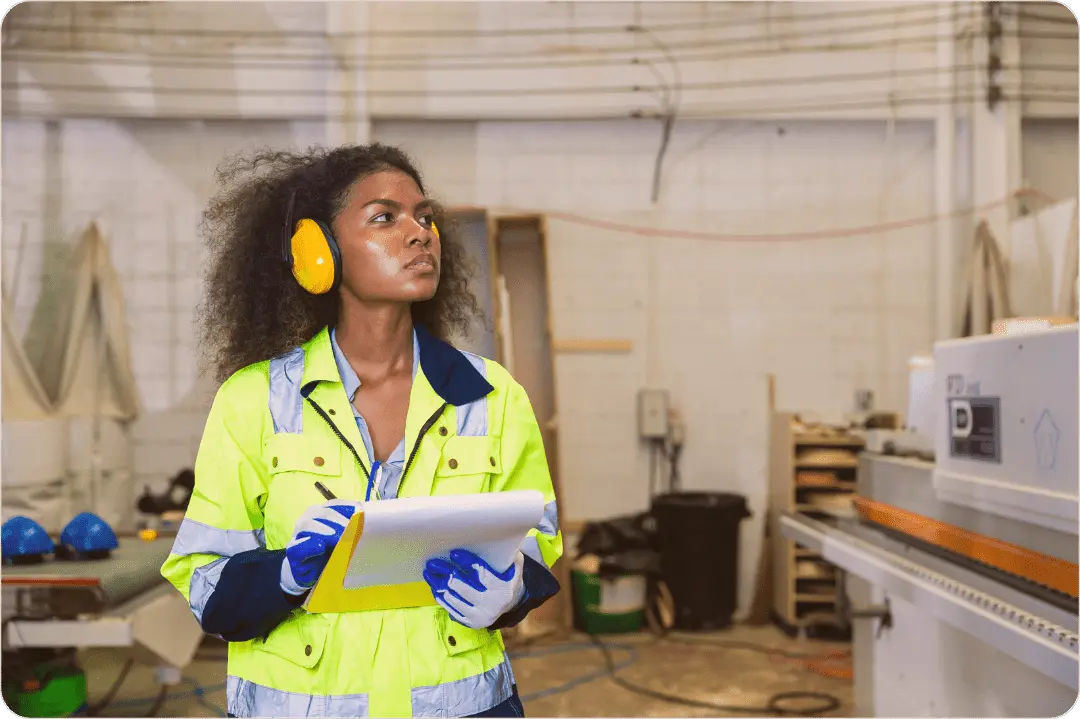
What Is Personal Protective Equipment, and How Can It Protect My Employees?
Safety should be a top priority in any workplace, but especially those where employees frequently work alone. To that end, employers of lone workers must understand what personal protective equipment (PPE) is. PPE acts as a barrier against workplace hazards, helping to prevent injuries and save lives. Take the time to learn about PPE and how it works to protect workers in isolation when other forms of help may not be available to them.
What Is PPE?
Personal protective equipment, or PPE, is essential safety gear to shield workers from workplace hazards. It’s a big part of occupational safety, especially for those working alone. PPE includes items such as helmets, gloves, goggles, and respirators, which protect against physical injuries, chemical exposure, or biological threats.
The choice of PPE depends on the job and its inherent dangers. Helmets guard against head injuries from falling objects, while gloves protect hands from cuts and harmful substances. Goggles prevent eye injuries from splashes or debris, and respirators filter out dangerous airborne particles. Each piece is crafted to tackle particular hazards, making PPE a cornerstone of a safe work environment.
PPE is crucial for lone workers. These individuals often face situations where immediate help isn't available, increasing their risk of accidents. Employers can significantly lower the chances of incidents by providing the right PPE, ensuring lone workers stay safe even when working in isolation.
Why PPE For Lone Workers Is Crucial
Lone workers often encounter unique challenges due to their solitary work environments. Without colleagues nearby, they are more susceptible to accidents and emergencies. This makes PPE their primary defense against potential hazards. For example, a lone worker handling hazardous chemicals might rely on gloves and goggles to prevent skin and eye injuries, while a construction worker depends on a helmet to protect against falling debris.
PPE reduces these risks and boosts the confidence of lone workers, enabling them to perform their duties effectively. Employers can ensure that even without direct supervision, workers remain protected by providing suitable PPE.
Types Of PPE Essential For Lone Worker Safety
Employers must choose PPE that matches the specific risks associated with their lone workers' tasks. Here are the key categories of PPE that lone workers might need to ensure their safety:
Head And Eye Protection
Head and eye protection are the easiest way to prevent serious injuries. Helmets are necessary in environments where falling objects pose a risk, such as construction sites. Goggles protect against chemical splashes and flying debris, making them essential in labs and manufacturing settings. Ensuring lone workers have access to these items can significantly reduce head and eye injuries, keeping your workforce safe.
Hearing Protection
Hearing protection is a necessity for noisy environments, preventing long-term auditory damage. Earplugs and earmuffs effectively reduce noise exposure, protecting lone workers from hearing loss. Industries such as manufacturing, where machinery noise is common, require hearing protection to maintain workers' auditory health. In especially loud environments, noise-canceling headphones may be needed.
Respiratory Protection
Respiratory protection is crucial in environments with dust, fumes, or chemicals. Masks and respirators filter harmful particles, safeguarding the lungs and preventing respiratory ailments from taking hold over time. For instance, a lone worker in a painting booth would need a respirator to avoid inhaling toxic fumes, ensuring their respiratory health remains intact.
Hand And Foot Protection
Gloves and safety boots help prevent hand and foot injuries in many environments. Gloves protect against cuts, burns, and chemical exposure, while safety boots shield from heavy objects and punctures. Tasks involving sharp tools or heavy machinery necessitate specific hand and foot protection.
High-Visibility Clothing
High-visibility clothing is an asset for lone workers in low-visibility areas or near traffic. These garments make workers easily noticeable, reducing accident risks. High-visibility vests and jackets are commonly used in roadwork and construction sites to enhance safety, preventing accidents due to negligence.
Implementing PPE In The Workplace
Employers must assess the specific needs of their lone workers to implement PPE effectively. This involves conducting a thorough risk assessment to identify hazards and determine the appropriate PPE for each task. Employers should also consider the comfort and fit of PPE to ensure consistent use.
Selecting the right PPE involves evaluating materials and features that best suit the job role. Consulting with safety experts or PPE suppliers can aid in making informed decisions. Additionally, regularly reviewing and updating PPE policies helps address new risks as they arise.
Training And Maintenance Of PPE
Training and maintenance of PPE are critical components in ensuring the safety and effectiveness of personal protective equipment for lone workers. Employers should prioritize comprehensive training programs that educate employees on the correct usage, fitting, and limitations of their PPE. This training should be an ongoing process, reinforcing the importance of PPE in daily operations and integrating it into the organization’s overall safety culture.
Moreover, regular maintenance of PPE helps preserve its protective capabilities. Employers should establish a routine inspection schedule to identify any signs of wear and tear or damage to their equipment. Taking a proactive approach like this ensures that PPE remains in optimal condition and continues to provide the necessary protection. Promptly replace or repair any compromised equipment. This way, employers can prevent potential safety breaches and maintain a high standard of workplace safety.
Additionally, involving employees in the maintenance process can foster a sense of responsibility and awareness regarding their safety. Encouraging workers to report any issues with their PPE and providing feedback on its functionality can lead to improvements and adaptations that better meet their needs. Through diligent training and maintenance, employers can ensure that lone workers are equipped with reliable PPE, significantly reducing the risk of accidents and enhancing overall safety.
Conclusion
Personal Protective Equipment is a major part of safeguarding lone workers from workplace hazards. Understanding PPE's meaning and importance allows employers to create a safer work environment for those working in isolation. Prioritizing the selection, implementation, and maintenance of appropriate PPE, along with providing adequate training, can significantly enhance workplace safety. If you have workers of any kind in your employ, you should be investing in high-quality PPE and training programs to ensure the well-being of lone workers, fostering a culture of safety and responsibility.
Now, that you know what PPE is and the importance of it, it's time to learn what top 3 personal protective equipments devices every Lone Worker should have.
Read More From the Lone Worker Blog
Scaling Your Lone Worker Business

If you are looking to scale up your business while keeping your workers protected and monitored, learn more about your local lone worker policies.
Read MoreImportant Practices For Keeping Your Employees Safe

There are simple steps that you and your employees can take to keep yourselves safe while working alone.
Read More


